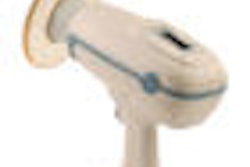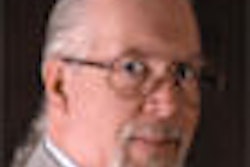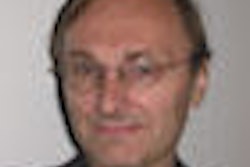
Hygienists lobbied for the right to extract teeth. The FDA changed its stance on amalgam. A new CAD/CAM machine hit the market.... And that's just the beginning. If you missed the headlines in dentistry this year, you missed some big events.
The field is moving so fast that if Rip Van Winkle, D.D.S., fell asleep for the next five years, he might wake up to find his whole way of doing business outmoded.
Two forces are driving the changes: burgeoning technology and the growing gap between rich and poor.
Gadgets galore
When it came to technical innovation, the biggest news came from an old drug approved for a new purpose. The FDA gave a green light to phentolamine mesylate (marketed as OraVerse by Novalar) for local anesthesia reversal, raising hopes that patients can have a major restoration at 10 a.m. and deliver a key note address at lunch.
But that was only the most striking of the technical wizardry that dental companies poured out in 2008. After 21 years of having the field to itself, Sirona's Cerec CAD/CAM machine had to make room for the new E4D made by upstart D4D. Now dentists have a choice of systems for making their own indirect restorations.
Also this year, Therametric Technologies and Lantis Laser promised the imminent release of two new devices intended to detect incipient carious lesions on individual teeth -- using quantitative light fluorescence and optical coherence tomography, respectively.
Lasers also gained adherents, with new evidence suggesting they can promote healing and slow caries.
It will be a long time before the average dentist has such gadgets in the office, but many more are buying digital sensors and software for two-dimensional radiography, spurred in part by new estimates of the dangers of dental x-rays.
All in all, such advances are making it possible to restore a patient's smile with more safety, precision, and luster than ever before.
Restorative materials themselves may not have taken any great leaps forward in 2008, but -- perhaps because dentists felt so confident of tooth-colored products by this year -- the FDA's new plans to regulate amalgam stirred only a mild reaction from the ADA. Concerns about bisphenol A (BPA), a plasticizer common in composite resins got some patients worried, but so far the research has been reassuring.
Promising paradigm
The new technology is pushing a paradigm shift from the drill-and-fill model to a health promotion approach, energetically articulated by John Featherstone, M.Sc., Ph.D., of the University of California, San Francisco as caries management by risk assessment (CAMBRA).
Not only could dentists use new tools to catch caries in early stages, they could try to stop the bacteria that cause them with xylitol or probiotics or, failing that, remineralize incipient lesions. Fluoride varnishes and amorphous calcium phosphate (ACP) products are gaining in popularity for this purpose.
Such advances led some experts to foresee a day when caries goes the way of smallpox and polio.
Technical challenges remain, however. Probiotics remained in the early stages of testing, while controversy over ACP (best known in the U.S. in the form of MI Paste) looked likely to slow its adoption.
Access fracas
But more than any technical problems, what has delayed the demise of cavities is the yawning gap between the oral care haves and have-nots.
Fully 12% of Americans, according to the Centers for Disease Control and Prevention, can't get the dental care they need, with dire health consequences. Dentists offering free care in 2008 sometimes arrived at clinics in the morning to find that a line had formed before dawn.
The demand for low-cost dentistry has inspired the American Dental Hygienists' Association to propose a new class of superhygienists whose purview might extend to extractions and restorations. The ADA and the state of Alaska have come up with their own competing models for "midlevel" providers. In the meantime, the high demand has led some M.D.s to take a stab at dentistry.
This year as in previous years, the ADA and other oral healthcare lobbyists tried to address the problem by increasing government dental care subsidies for the poor. But legislation for that purpose remained stalled in Congress. Promising programs initiated by individual states were threatened by drastic budget cuts as the nation fell into recession.
Indeed, the recession cast a dark cloud over dentistry as well as the rest of the economy, with prognosticators -- including dental supply companies -- predicting that more patients will delay getting dental work, and dentists preparing themselves for the loss in income.
Many dentists who specialized in treating the underserved remained unsung heroes. Others were accused of overbilling the government and paid settlements up to $10 million.
Indeed, lawsuits of many kinds filled the headlines, including one in which a patient's death under sedation forced a pair of Chicago dentists to pay $3.9 million.
All in all, an exciting year. Now for the next one.



















